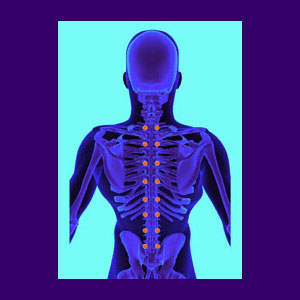
Back pain trigger points are used in various types of therapy to elicit relief from chronic muscular tension. Trigger points are areas of particular sensitivity within soft tissues or joints which can be manipulated to increase or decrease pain experienced throughout the body. For back pain treatment, these anatomical points are used in dedicated trigger point therapy, chiropractic and many forms of massage therapy.
This explorative essay examines the role of trigger points in both treating and causing back ache. We will discuss how trigger points are used and their overall significance in the back pain sector of healthcare.
What are Back Pain Trigger Points?
Trigger points describe areas involving muscular knots or pent up tension. Most are attributed to some form of injury and this can truly be the case for some patients. However, many instances of muscular tension are not sourced by structural damage or degenerative process, but instead by internal stress. This is called psychological back pain and is one of the single most prevalent reasons for chronic symptoms to exist.
Back pain trigger points may be painful when manipulated or may provide instant relief. Many caregivers massage these points vigorously, eliciting agonizing pain, which the poor patient simply has to work through or breathe through until the region feels better. This type of torturous massage may be completely unnecessary and even useless, but still, these same care providers insist that these knots must be broken up in order for the pain to end. A valid argument or a flare for sadism? You can be the judge.
Back Pain Trigger Points Information
There is quite a bit of hype about trigger point manipulation. There are care practitioners who specialize in this practice and even a variety of devices used for professional and self treatment of trigger point concerns. Trigger points have become big business in the back pain industry to the tune of hundreds of millions of dollars every year.
There is little or no validity in trigger point theory which is supported by accepted research or traditional medical science. Sure, massage can help break up knots and provide temporary relief, but at a cost of muscular pain and soreness quite often. However, when the actual underlying source of the trigger point issues is ischemia, this will only be symptomatic treatment and the pain will always come back, time after time, regardless of how many manipulation sessions you endure. In other cases, the therapy resolves the painful points in one area and creates new ones somewhere else.
Sound familiar?
Yeah, I bet it does. Trigger point therapy is almost always symptomatic treatment, no different from any other type of bodywork.
Back Pain Trigger Point Therapy
Most patients use trigger point therapy as a substitute or complement for any of the other symptomatic manipulation modalities, such as traditional massage or chiropractic. These methods must be continued long-term to remain effective and provide no real hope for a lasting cure from most diagnosed conditions.
I highly recommend spending some quality time researching your diagnosed condition and looking for any prospective holes in the causative theory. This is far more useful, since many back pain concerns are misdiagnosed and this is precisely why so many of you can never find a true cure for the problem. If the suspected causation is not correct, then any therapy selected to target the mistake is not going to be the right one.
For practitioners who use trigger point treatment, I have no criticism. I simply recommend informing the patient that the sessions are unlikely to resolve a chronic dorsopathy complaint, since statistically, most symptoms will return in the same location or a new location time after time again.
On a positive note, I would recommend trigger point therapy, or any type of bodywork, over drugs virtually 100% of the time.
So, the bottom line really comes down to personal belief. If you trust trigger point manipulation and find it to be helpful, then feel free to go for it. There are very few risks and the results may speak for themselves. Remember, if you believe in a back pain treatment, its effects are likely to prove positive. Placebo or actual efficacy really does not matter. What truly counts is that you feel better.
Back Pain > Chronic Lumbar Back Pain > Back Pain Trigger Points




